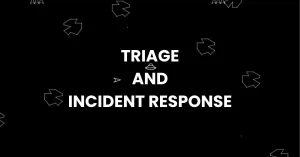
Keeping Software Secure: The Importance of Patch Management
To prevent software vulnerabilities from becoming exploitable threats, maintaining up-to-date systems is paramount. This underscores the critical role of patch management. Vulnerabilities arise from inherent software errors and oversights, which threat actors can exploit. Continuous patching is the frontline defense against these risks.
Understanding Patch Management
Patch management involves identifying software products in need of updates, acquiring, installing, and testing these updates. It is indispensable for securing networks against cyberattacks.
In enterprise networks, patch management typically follows these steps:
- Vulnerability Scanning: Administrators use tools to scan for weaknesses in the network.
- Prioritization: Vulnerabilities are ranked by severity, guiding administrators on which patches to apply first.
- Testing: Patches are validated on a subset of the network to ensure they are safe and effective.
- Deployment: Once validated, patches are deployed across the network manually or using automated tools.
Importance of Patch Management
Patching is crucial for several reasons:
- Security Enhancement: Patches defend against evolving threats by addressing vulnerabilities promptly.
- Regulatory Compliance: Many regulatory frameworks mandate patch management. Non-compliance can lead to sanctions or closure.
- Operational Efficiency: Updated systems operate smoothly and efficiently, incorporating latest features and improvements.
- Risk Mitigation: By reducing vulnerabilities, patching lowers the risk of cyberattacks and potential data breaches.
Proactive Patching for Businesses
Successful patch management requires proactive measures. Organizations must prioritize and execute patches promptly to mitigate risks effectively. Neglecting patching due to resource constraints or oversight can leave systems vulnerable to attacks.
The rise of remote work further complicates patching efforts, necessitating robust endpoint management solutions for comprehensive coverage.
Objectives of Patch Management
The primary objective of patch management is timely deployment of software updates to bolster security and minimize exposure to threats. Establishing clear policies and procedures ensures systematic patching across the organization.
Risks of Neglecting Patch Management
Not implementing patch management exposes organizations to significant risks:
- Increased Vulnerability: Unpatched systems are prime targets for cyberattacks and malware.
- Compliance Issues: Failure to comply with regulatory standards jeopardizes trust and partnerships.
- Compatibility Concerns: Outdated software may not integrate smoothly with newer applications, affecting productivity.
- Reputation Damage: Data breaches resulting from unpatched vulnerabilities can tarnish a company’s reputation and incur substantial financial losses.
Types of Patches
Patches vary in urgency:
- Security Patches: Critical for addressing vulnerabilities that could be exploited by attackers.
- Bug Fixes: Address software glitches and operational inconsistencies.
- Feature Updates: Enhance functionality and user experience without directly addressing security issues.
Frequency of Patch Management
Best practices recommend initiating patch cycles promptly upon release. Even if it means deviating from regular schedules, timely deployment is crucial to mitigate risks effectively.
Delaying patches due to operational conflicts or oversight increases the window of vulnerability, potentially leading to severe consequences.
In conclusion, proactive and systematic patch management is essential for safeguarding systems, ensuring compliance, optimizing performance, and protecting organizational reputation amidst evolving cybersecurity threats.
Source: https://blog.quest.com/importance-of-patch-management-to-avoid-business-vulnerabilities/
About DT Asia
DT Asia began in 2007 with a clear mission to build the market entry for various pioneering IT security solutions from the US, Europe and Israel.
Today, DT Asia is a regional, value-added distributor of cybersecurity solutions providing cutting-edge technologies to key government organisations and top private sector clients including global banks and Fortune 500 companies. We have offices and partners around the Asia Pacific to better understand the markets and deliver localised solutions.










